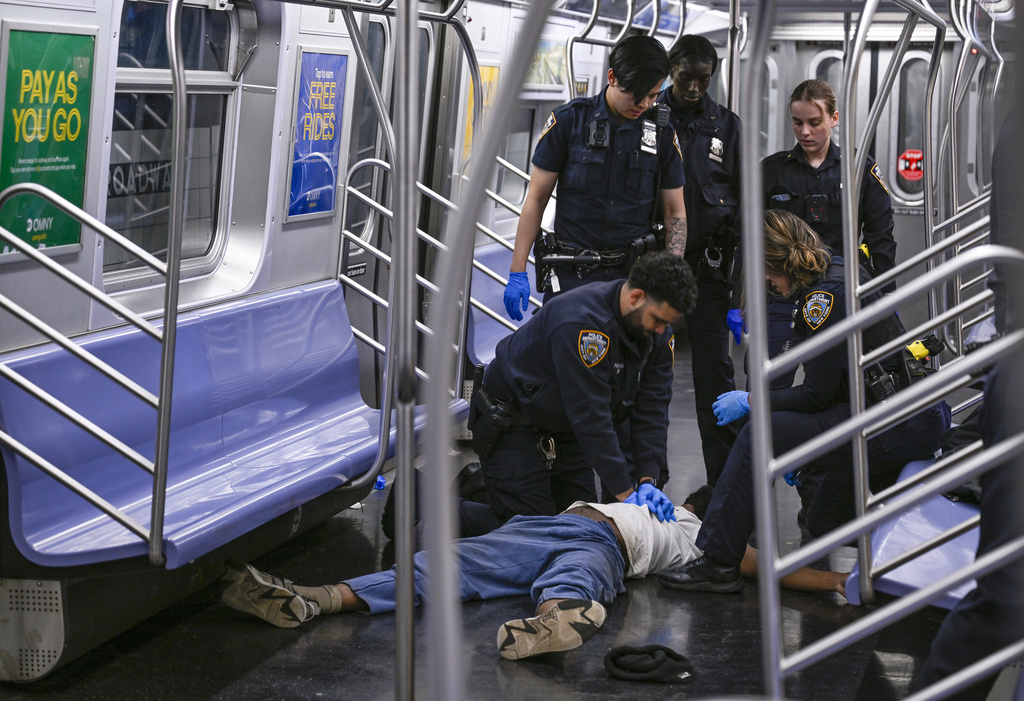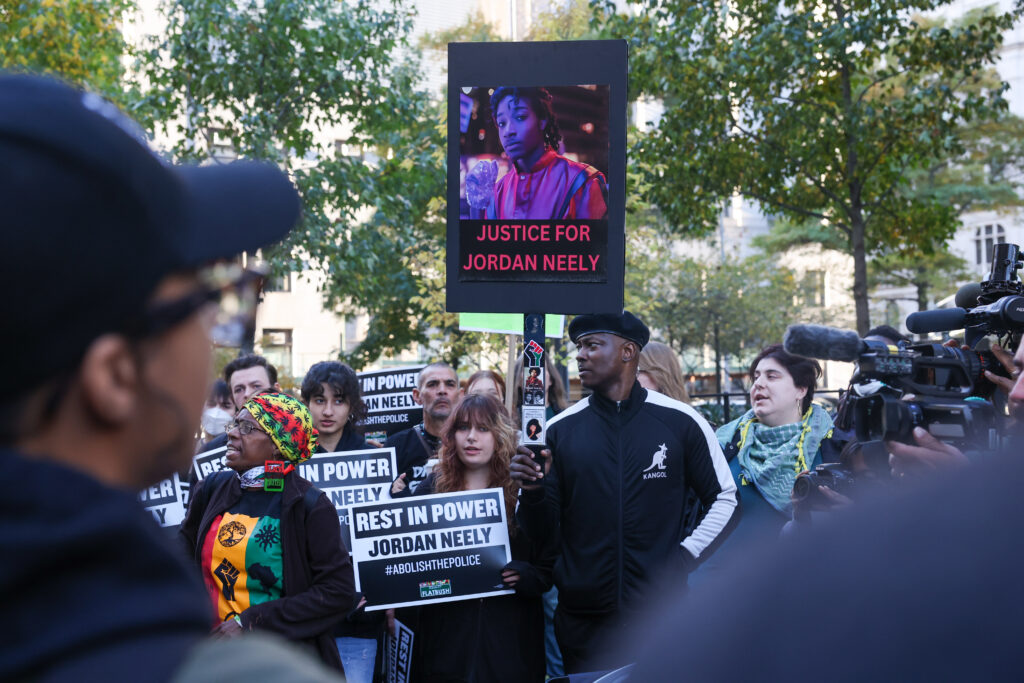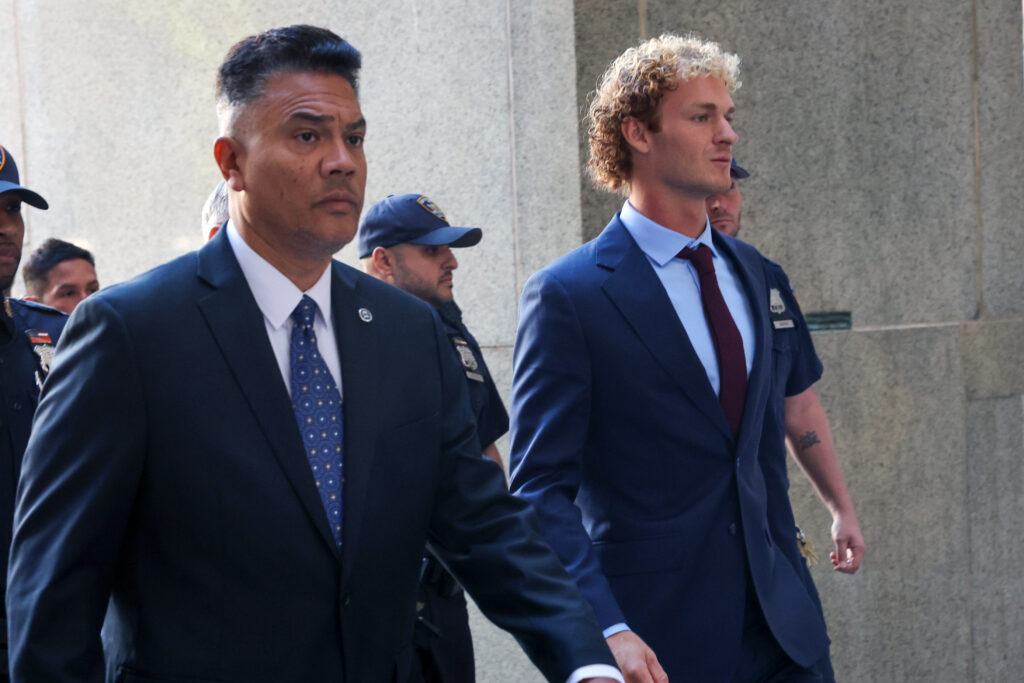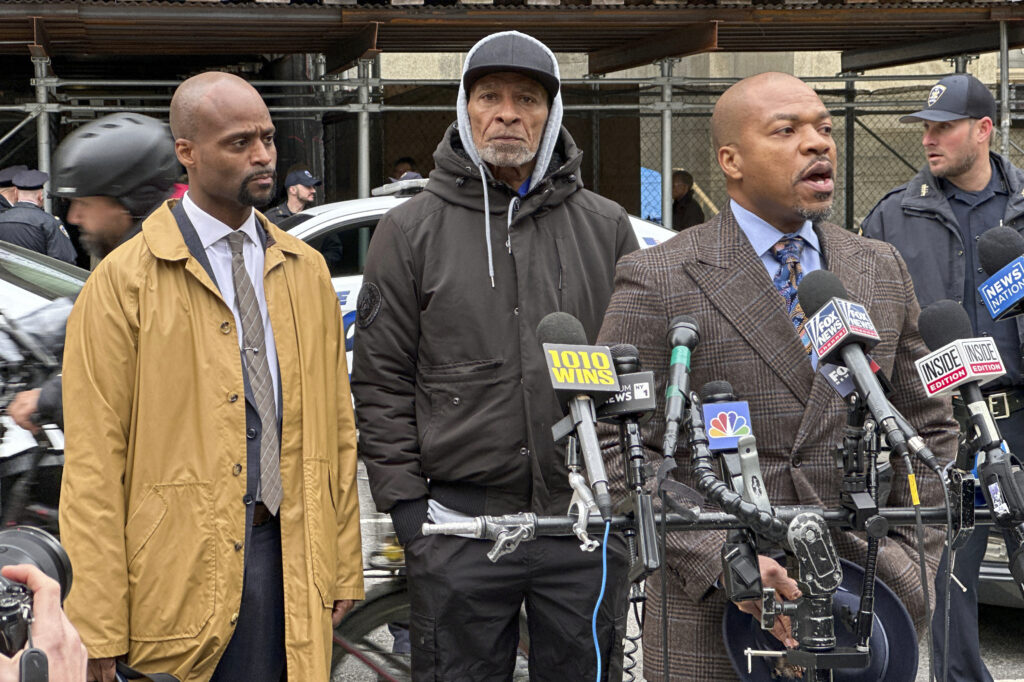The homeless Michael Jackson impersonator, Jordan Neely, died from asphyxiation, a medical examiner testified on Friday in the trial of Daniel Penny, the Marine veteran who put Neely in a fatal chokehold on a New York subway last year. Defense attorneys attempted to challenge the examiner’s cause of death but did not finish their cross-examination on Friday.
The medical examiner, Dr. Cynthia Harris, told the jury at Manhattan criminal court on Friday that Neely died from lack of oxygen. “It is my medical opinion that there are no alternative reasonable explanations of his death,” Ms. Harris said.
“Asphyxial deaths are often some of our most challenging (cases),” Ms. Harris testified. “In a shooting or stabbing I can show you an image of a gunshot wound in the chest… but in asphyxial cases, often, I am asking a non-medical person to imagine the lack of oxygen.”
After working through about 30 witnesses, an assistant district attorney Dafna Yoran, who is prosecuting the high profile case on behalf of Manhattan district attorney Alvin Bragg, called her last and most important witness on Friday, the doctor from the New York City Office of Chief Medical Examiner (OCME), who performed Neely’s autopsy and determined his death was caused by “compression of the neck,” writing “chokehold” on the death certificate in parenthesis.

Prosecutors have charged Mr. Penny, a 26-year-old Long Island native, who served in the Marines for four years, with second-degree manslaughter and negligent homicide, alleging he unintentionally, yet recklessly killed Neely with excessive force when he held the street performer in a chokehold for about six minutes on May 1, 2023. Defense lawyers argue that Neely was a shrieking madman who was threatening violence on the subway car, and that Mr. Penny had moved to neutralize a serious threat to his fellow passengers’ safety. The controversial case has triggered protests from both sides.
In a recorded interview with detectives, which Mr. Penny gave voluntarily, at the police precinct after the tragic incident, he demonstrated the chokehold and told the officers he was not trying to kill Neely, he “just wanted to keep him from getting to people.”
“He’s threatening people,” Mr. Penny can be heard saying in the video. “I’m not a confrontational guy. But in the Marine Corps, I felt the need to, you know, step in. There’s women and children on the train. I’m sure there’s ladies there that will vouch for me.”
According to witness testimony, Neely, who was 30 at the time of his death, stopped the doors of a Northbound F-train from closing at the Second Avenue station and boarded the subway. Standing in the middle of the train car, he immediately started yelling in an aggressive tone that he was hungry, thirsty, ready to go to prison, and “ready to die”.

It remains the subject of dispute among witnesses if Neely directed his verbal threats at the passengers, two of whom testified they feared for their lives.
Mr. Penny, who was on his way to the gym, grabbed Neely from behind, placed him in a chokehold and took him down to the floor of the car. A video, recorded by the freelance journalist Juan Alberto Vazquez, who was also on the train, shows that Mr. Penny kept the chokehold around Neely’s neck for about six minutes including 51 seconds after his body appeared to go limp.
When police officers arrived at the scene, they found Neely on the floor of the subway car, motionless, unresponsive and unconscious. Mr. Penny was standing next to the victim with other passengers. One of the officers testified that he felt a “faint pulse” on Neely’s wrist. He applied sternum rubs and chest compressions, trying to resuscitate Neely. When he looked for the pulse again, it had faded. Neely never regained consciousness and was pronounced dead at the hospital about an hour later.

“This is an asphyxial death,” Ms. Harris said on Friday. “The brain dies first… The pulse can still be found ten minutes after a brain’s death.” She explained to the jury that the heart can still have a beat, a person can still have a pulse even after the brain has died. That’s why organs can be transplanted from one person to another, because they continue to function even after the brain has shut down.
“The brain will cease to function… Other organs are not as sensitive to oxygen as the brain… You can take a functioning heart from someone whose brain is dead and give it to someone else,” the doctor testified.
Looking at stills taken from the video shot during the incident, Ms. Harris indicated several factors she viewed as signs that Neely was dying from the chokehold. Neely’s “entire face”, she said, appeared to turn “uniformly purple.” She explained that compression of the veins causes a face to become pale. “If, however, you compress the veins but you have not applied force on the arteries, and the blood is still being pumped into the head it cannot go anywhere… you become purple… I believe that his face is much darker and more purple than his arms,” the doctor said.
She also pointed to what she believed was Neely’s last “voluntary, purposeful movement.” The two men had been on the subway floor for about five minutes. Mr. Penny is holding Neely from behind in a tight embrace. Neely can be seen struggling, trying to break free. “He is kicking,” the doctor explained, ”He is trying to purposely turn to the bench.” But then, the doctor said, comes the moment when “the movements he makes are not purposeful… They look like twitchings as part of the dying process… I believe he has lost consciousness. The brain is injured…”

She told the jury to pay attention to Neely’s feet. “It would be his feet that I want you to watch,” she said, “symmetrical and slowly both toes turn upward.”
To further corroborate Ms. Harris’ findings, the prosecution presented photographs taken during the autopsy of Neely’s neck and Neely’s eyes. The outside of the neck was bruised and muscles inside the neck were hemorrhaged, caused by “considerable amount of constrictive, squeezing force,” the doctor explained. Neely also had “small pools of blood in the eye… commonly seen in the result of asphyxial deaths.”
The prosecution asked about the sickle cell trait, a genetic blood disorder that predominantly affects people of color (though in rare cases, it can also affect white people), which Neely carried. The defense has argued that the sickle cell trait should also be considered as the cause of death.
The doctor explained the sickle cell trait is usually a “benign… asymptomatic condition” much different than sickle cell anemia, a very serious genetic disease. Carrying the trait, she said, means having healthy and unhealthy red blood cells, and usually “the good copy can cover for the bad copy.”

However, Neely’s autopsy showed that he experienced what the doctor described as a “sickling crisis,” where “the red blood cells are unable to deliver oxygen to the cells.” The jury saw photographs of Neely’s spleen, which was completely speckled with sickled cells.
Ms. Harris emphasized that the sickled cells did not cause Neely’s death but were a direct result of the lack of oxygen in his body.
“Could the sickling itself be a cause of death? You need to be able to explain why someone sickles. The sickling is explained by the low oxygen. It is a mechanism not the cause of death.”

When a defense attorney, Steven Raiser, cross-examined Ms. Harris, he asked about the toxicology report, which showed that Neely, who had a long history of drug use, had the synthetic marijuana drug K2 in his body at the time of his death.
But Ms. Harris replied that “no toxicology result could have changed my opinion,” even if Neely “had enough fentanyl in his system to put down an elephant.”
Mr. Raiser also questioned the doctor about why she took several days before she decided what cause of death to write on Neely’s death certificate. Ms. Harris testified that she was uncertain at first because she had received conflicting witness testimony from the NYPD detectives.
“It stemmed from a misunderstanding in a police report,” she told the defense attorney. “On the day of the autopsy I was very confused.” One witness had told the police that it sounded as if “Neely was screaming, very much responsive,” during the struggle with Mr. Penny and that conflicted with other statements from witnesses who said he was being choked.

The video of the incident convinced the doctor that Neely had died from compression of the neck. “After watching it, I had no further questions about how he was dead,” she said on Friday.
Mr. Raiser asked if the doctor could determine, by watching the video, how much force Mr. Penny was applying onto Neely’s neck and if it was consistent.
“No,” the doctor replied, “I can’t tell you how much (force) is being used.” Though she added that in asphyxial cases, “The force is fluctuating along with the struggle… unless it’s suicide by hanging.”
The defense will resume its cross-examination on Monday. The judge told jurors that he expects the evidentiary portion of the trial to finish by Thanksgiving.
(Except for the headline, this story has not been edited by PostX News and is published from a syndicated feed.)

